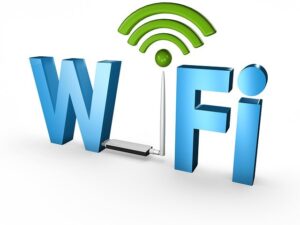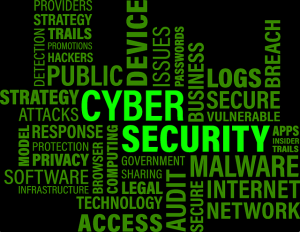Blockchain Is The Future

One of the buzzwords from 2017 was easily blockchain along with cryptocurrency. For anyone who is looking to invest their money or look into the digitization of money, it is important that they understand the inner workings of the technology behind it.
Blockchain is the underlying technology that makes bank transactions so much safer, and they can be implemented into all verticals that use secretive information which they do not want shared.
The technology behind blockchain is so secretive that it cannot be destroyed. A person or group of people who have the input can use it to decode and decipher the output. The reason that the technology is called blockchain is that once you change an entry on it, it cannot be reversed; the next update will continue as a new link – similar to a chain, and it continues from there.
What is Blockchain Technology?
Imagine you have a notebook that you share with a group of friends. Whenever someone wants to make a transaction, like buying or selling something, they write it down in the notebook. However, instead of just one person keeping the notebook, everyone in the group has a copy of it.
Now, here’s where it gets interesting. Each page in the notebook represents a “block” and contains a bunch of transactions. Once a page is filled with transactions, it is sealed and linked to the previous page, forming a “chain” of blocks. This is why it’s called a blockchain.
The special thing about this notebook is that everyone in the group can see the transactions and verify them. Whenever a new transaction is added, it gets checked by multiple people to make sure it’s valid and accurate. Once it’s verified, it cannot be changed or removed.
So, why is this important? Well, this decentralized system ensures that no single person or authority has complete control over the transactions. It increases security because if someone tries to tamper with a transaction, everyone in the group will notice the inconsistency.
Additionally, since everyone has a copy of the notebook, it’s very difficult for someone to manipulate or cheat the system. This makes it a trustworthy and transparent way of keeping track of transactions.
Blockchain technology is not limited to just financial transactions. It can be used for many things, like tracking the origin of products, ensuring the authenticity of documents, and even creating decentralized applications.
Overall, blockchain technology is a way to securely record and verify transactions in a decentralized and transparent manner. It eliminates the need for a central authority, reduces the risk of fraud, and opens up a world of possibilities for various industries.
Blockchain technology is poised to revolutionize and shape the future of multiple industries, offering enhanced security, transparency, efficiency, and cost reduction, ultimately transforming the way we conduct transactions and interact within sectors such as finance, supply chain, healthcare, and government.
Key components of Blockchain Technology
Decentralization :
Instead of having a central authority or organization controlling the entire system, blockchain operates on a network where many computers, called nodes, work together. Each node has a copy of the entire blockchain, which means that no single entity has complete control over the transactions.
This decentralization increases transparency and reduces the risk of manipulation or fraud.
Distributed Ledger :
Think of the blockchain ledger as a digital record book that keeps track of all transactions. Unlike a traditional ledger that is maintained by a single entity, the blockchain ledger is distributed across multiple nodes in the network.
This redundancy ensures that even if some nodes go offline or become compromised, the rest of the network still holds a complete and up-to-date copy of the ledger.
Cryptography :
Advanced cryptographic techniques used to secure the data and ensure its integrity. When a transaction is made, it is encrypted using complex mathematical algorithms. This encryption makes it extremely difficult for anyone to tamper with the transaction or alter the information stored in the blockchain.
Cryptography also provides authentication, ensuring that only authorized participants can access and interact with the blockchain.
Consensus Mechanisms :
Consensus mechanisms are like rules that govern how transactions are verified and added to the blockchain. Different consensus mechanisms, such as Proof of Work (PoW) or Proof of Stake (PoS), ensure that all nodes in the network agree on the validity of transactions and the order in which they are added to the blockchain. This agreement is crucial to maintaining the integrity and consistency of the blockchain.
Smart Contracts :
Smart contracts are self-executing contracts that are stored on the blockchain. These contracts automatically enforce the agreed-upon terms and conditions without the need for intermediaries. Smart contracts can facilitate various types of agreements, such as the transfer of assets or the execution of specific actions when certain conditions are met. They eliminate the need for trust in the traditional sense and provide transparency and efficiency in contract execution.
Immutable Records :
Once a transaction is recorded on the blockchain and added to a block, it becomes almost impossible to alter or delete. The combination of decentralization, cryptographic hashing, and consensus mechanisms ensures the immutability of the blockchain records.
This feature makes it a reliable and auditable source of information, as the transaction history remains transparent and tamper-proof.
Blockchain Applications in Different Industries
Finance and Banking
- Cross-border payments and remittances: This can enables faster, more secure, and cost-effective cross-border transactions by eliminating intermediaries and reducing settlement times.
- Smart contracts and decentralized finance (DeFi): Smart contracts on the blockchain automate financial agreements, such as loans, insurance, and investments, eliminating the need for traditional intermediaries and enabling decentralized financial services.
- Identity verification and fraud prevention: Provide a secure and tamper-proof system for identity verification, reducing fraud in financial transactions and improving Know Your Customer (KYC) processes.
Supply Chain and Logistics
- Traceability and provenance: Blockchain technology can track and verify the origin, journey, and authenticity of products, reducing counterfeiting and ensuring transparency in supply chains.
- Supply chain optimization: By digitizing and automating supply chain processes on the blockchain, companies can streamline operations, improve inventory management, and enhance efficiency.
- Counterfeit prevention: Prevent the circulation of counterfeit goods by creating a transparent record of product ownership and verifying authenticity.
Healthcare
- Secure storage and sharing of medical records: Blockchain can securely store patient records, enabling secure sharing of health information between healthcare providers and improving patient privacy.
- Drug traceability and authenticity: You can track the entire lifecycle of pharmaceutical products, ensuring the integrity of the supply chain and reducing the distribution of counterfeit drugs.
- Clinical trials and research: It can facilitate transparent and auditable records of clinical trials, improving data integrity, participant consent, and collaboration between researchers.
Government and Public Sector
- Voting systems and election transparency: Secure and transparent voting systems, ensuring the integrity of elections and reducing the possibility of tampering or fraud.
- Land registries and property rights: You can create records of land ownership, simplifying the process of transferring property titles, reducing fraud, and increasing transparency.
- Social welfare distribution: Enhance the efficiency and transparency of distributing social welfare benefits, reducing fraud and ensuring that aid reaches the intended recipients.
Energy and Utilities
- Peer-to-peer energy trading: Enable direct energy trading between producers and consumers, reducing reliance on intermediaries and optimizing energy distribution.
- Grid management and asset tracking: Improve grid management by securely tracking and verifying energy assets, ensuring efficient utilization and reducing losses.
Insurance
- Claims processing and fraud prevention: Blockchain can automate claims processing, reducing paperwork and streamlining verification processes. It can also enhance fraud detection and prevention by providing transparent and tamper-proof records of insurance transactions.
Education
- Verification of credentials: Get the secure and tamper-proof verification of educational certificates and credentials, improving trust and reducing the need for manual verification processes.
Retail and E-commerce
- Supply chain transparency: Transparent and traceable supply chain information, enabling consumers to verify product authenticity and ethical sourcing.
- Secure and decentralized marketplaces: Blockchain-based marketplaces can facilitate peer-to-peer transactions, eliminating the need for intermediaries and enhancing security.
Art and Collectibles
- Provenance and authenticity verification: Create an immutable record of artwork ownership and transaction history, ensuring the authenticity and provenance of valuable art pieces.
Entertainment and Media
- Digital rights management: Enable secure and transparent management of digital content rights, ensuring fair compensation for content creators and preventing unauthorized use.
Artificial Intelligence
- Data privacy and security: Get a secure and decentralized framework for storing and managing sensitive AI training data, ensuring privacy and preventing unauthorized access.
- Data integrity and auditability: Create transparent record of AI algorithms, data sources, and model outputs, allowing for easy auditing and verification of AI systems.
- AI model marketplaces: Blockchain-based platforms can facilitate the trading and sharing of AI models, allowing developers to monetize their models and enabling organizations to access a broader range of AI capabilities.
Agriculture and Food Safety
- Supply chain transparency: Provides end-to-end visibility and traceability in the agriculture and food industry, allowing consumers to verify the origin, quality, and safety of products.
- Quality control and certifications: Record certifications and audits related to farming practices, organic labeling, and fair trade, ensuring transparency and promoting consumer trust.
- Efficient transactions and fair pricing: Blockchain-based platforms can facilitate direct transactions between farmers and buyers, eliminating intermediaries and ensuring fair pricing for agricultural products.
Related :
How Can Blockchain Benefit E-commerce Business?
Blockchain Industry in Logistics
Blockchain Integration in Mobile Apps
How to Use Blockchain to Support Your Metaverse Development?
Future of Blockchain Technology
- Increased mainstream adoption: As blockchain technology becomes more mature and overcomes challenges, we can expect to see it being used by more companies, governments, and individuals in their daily operations. This widespread adoption will lead to blockchain becoming a common technology across various industries.
- Integration with Internet of Things (IoT): Blockchain and IoT devices can work together to securely share data and communicate with each other. This can be used in smart homes, supply chain tracking, and industrial automation, ensuring secure and trustworthy interactions between connected devices.
- Interoperability between blockchain networks: Efforts are being made to allow different blockchain networks to work together seamlessly. This means that transactions and data can be shared between different blockchains, opening up new possibilities for collaboration and creating more powerful decentralized applications.
- Advancements in scalability and transaction speed: Blockchain networks have faced challenges in handling a large number of transactions quickly. However, ongoing research aims to improve scalability, making blockchain networks faster and more capable of handling high volumes of transactions.
- Enhanced privacy features: While transactions remain secure and transparent, individuals will have more control over their personal data and can choose when and how it is shared.
- Integration of artificial intelligence and machine learning: Combining blockchain with AI and machine learning technologies can enable advanced data analysis and automation within blockchain networks. This means that data can be analyzed to find patterns, detect anomalies, and optimize processes, making it even more efficient.
- Central bank digital currencies (CBDCs): Central banks are exploring the possibility of creating digital currencies based on blockchain technology. These digital currencies can provide faster and more secure transactions, improve financial inclusion, and allow governments to have better insights into their economies.
- Decentralized finance (DeFi) evolution: DeFi has gained popularity, and we can expect to see further advancements in this area. This includes the development of more sophisticated DeFi applications, new financial instruments, and improved user experiences. DeFi has the potential to revolutionize traditional finance and make financial services more accessible to everyone.
- Regulatory frameworks and standards: As blockchain technology matures, regulatory frameworks and standards are likely to be established. These regulations will provide clarity and guidelines for businesses and users, increasing trust and encouraging wider adoption.
- Environmental sustainability: Concerns about the energy consumption of blockchain networks have led to the exploration of more energy-efficient consensus mechanisms. These mechanisms aim to reduce the environmental impact of blockchain technology while still maintaining its security and functionality.
What’s the difference between bitcoin and blockchain?
Many key differences stand out between the concepts of bitcoin and blockchain. While blockchain remains a distributed, secure and encrypted ledger where transactions can be made, bitcoin is a cryptocurrency that allows people to use its value to make online transactions. Bitcoin is mainly seen as the currency that you will use when making transactions over these encrypted systems.
To make it easier, think of blockchain as the engine that is used to control different electrical devices such as planes, washers, elevators, vehicles and so on while Bitcoin is the first vehicle that was invented, after which different cars followed suit.
Financial impact through blockchain
There are many ways through which finance and commerce will be directly affected by the blockchain technology. The technology will be used by banks, and the NASDAQ will use the technology to expand all its equity management capabilities.
Further, all equity, finance income trades and currency trades become easier to do owing to the distributed ledgers. This creates a great opportunity for banks to drive efficiency and work more smoothly.
By getting a data science certification for blockchain, you will be able to understand the technology that goes into reducing cyber risks and offering identity authentication. There are many ways in which blockchain can be used, including:
- Car rental agencies can use smart contracts which allow rentals to make transactions whenever payments are made. The insurance information is confirmed using the blockchain technology
- Refrigerators that are equipped with sensors can use the blockchain technology to manage interactions that are automated with the external world
- Businesses will use blockchain to create platforms that are trustworthy and easier to implement
- It will help bring transparency while offering visible identity authentication via a visible lecture
Thus, blockchain has the power to shift the way we do our transactions. It is important that people read and understand its working so that they can make an informed decision. The blockchain is still in a nascent state but individuals are beginning to gain more knowledge on it due to its soaring popularity.
By eliminating the middleman while running transactions big transactions, companies will be able to save a lot of money and this is one of the primary reasons that blockchain-enabled bitcoins are being considered to be the future. Also, no one party will have absolute power over the transactions and this means that there is equality in the way business is done. Investing in blockchain now is a very prudent idea and will return good dividends over the long term.






